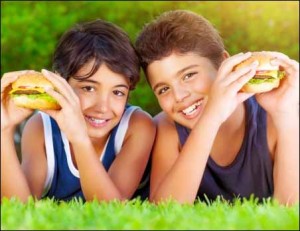 Annals of General Psychiatry (2015) March 1; 14:12
Annals of General Psychiatry (2015) March 1; 14:12
This was a study on children with ADHD in Iran who were already receiving Ritalin therapy, to see if improving their diet in general might make a difference. The children were divided into two groups randomly. While children in both groups continued taking their usual medications, one group was also given dietary advice consisting of lists of foods called “Favored” and “Un-favored.”
- Favored food examples: dairy, home-made fruit juices, vegetables, low-fat meats
- Un-favored food examples: sugar, soft drinks, commercially made fruit juices, sauces
Parents were advised to encourage the children to eat as much as possible from the “Favored” list and as little as possible from the “Un-favored” list.
Although the average scores from each group were not much changed, when the researchers used the degree of compliance (called “favorite dietary behavior”) as a variable, they found that the more the child complied with the improved diet, the better he did.
QUOTE: “when both groups were combined, there was a significant relationship between improvements in favorite dietary behavior and improvements in measures of attention.”
NOTE: Per communication with the author, the Ritalin used was provided by their pharmacist and is assumed to contain dye. According to the FDA Medication Guide for Ritalin, the dyes contained are Yellow 10 and Green 3, depending on dosage. All the children, therefore, consumed at least one of these dye additives every day – and yet they still had measurable improvement when they ate better foods with fewer additives.




















